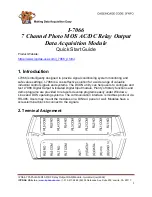
SINAUT ST7 Station control system - System Manual
System Manual, 05/2007, C79000-G8976-C178-06
147
Network structures and topologies
4
The following overview shows you the network structures that can be implemented with
SINAUT ST7 in a WAN and on Industrial Ethernet. For each network configuration, you will
also see the protocols and modes with which SINAUT can handle communication over the
network.
4.1
Overview of the possible network types
With SINAUT ST7, complete hierarchical control networks consisting of stations, node
stations and control center can be set up over a WAN (Wide Area Network).
The following WAN types can be used to exchange information between the devices.
Classic WAN
The following classic WANs can be used for data transmission:
● Dedicated lines, private or leased copper or fiber-optic cable
● Private wireless networks (optionally with time slots)
● Analog telephone network
● Digital ISDN network
● Mobile wireless network GSM
Ethernet-based WAN
SINAUT communication is possible between station and control center and between stations
over Ethernet-based WANs.
● Over wireless by using special wireless devices optimized for Ethernet, for example,
SCALANCE W
● Over fiber-optic cable
– For example by using SCALANCE X switches with optical ports; this allows distances of
up to 26 km to be covered,
or also
– in conjunction with transmission systems such as PCM30 or OTN
● Over public networks and Internet with DSL or GPRS
The symbols used in the following configurations indicate the function of the WAN port of a
TIM module.
A TIM 3 module has 1 WAN port, a TIM 4 has 2 WAN ports. The two ports of a TIM 4 can
both have the same function (e.g. 2 x master) or different functions (e.g. node + master).
With redundant WAN connections, a TIM 4 with two ports must always be used because
redundant paths always start and end on a TIM module.
















































